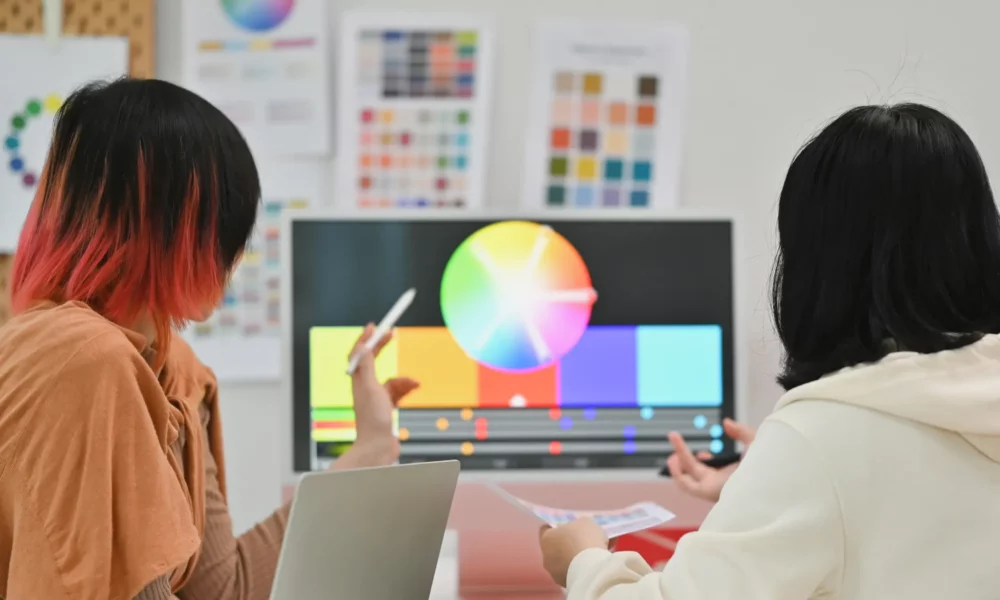How to Start a Design Agency

Starting a design agency can be an exciting and rewarding venture, but like any business, it requires careful planning and strategic decision-making. The creative side of things may come naturally to you—whether it’s graphic design, branding, web design, or UX/UI—but building an agency means balancing creativity with business acumen. You’ll need to consider how to structure your agency, what services to offer, and how to market yourself in a competitive industry.
Before diving in, let’s explore the key steps involved in starting a design agency and the various options you have when it comes to growing your business.
Defining Your Niche and Services
The first step in starting any successful design agency is defining your niche. What kind of design services are you going to offer? While many design agencies try to cover a broad range of services, it’s often a good idea to start with a clear focus.
Are you going to specialize in branding and identity design? Or maybe your passion is in web design, UX/UI, or packaging design? Being clear about your strengths from the beginning will help you attract the right clients and establish a strong reputation in your chosen field.
That said, as your agency grows, you can always expand your services to include related areas. For example, if you start as a web design agency, you might later add SEO, content creation, or digital marketing services to create a more comprehensive offering for your clients. The key is to start with what you do best and gradually build from there.
Choosing Your Business Model
Once you’ve decided on your niche, the next step is to think about how you’ll structure your design agency. There are a few different business models to consider, each with its own advantages and challenges.
The Freelance Collective Model
One popular option is starting as a freelance collective, where you act as the face of the agency and partner with other freelance designers, developers, and marketers to complete projects. In this model, you don’t need to hire full-time staff from the get-go, which keeps overhead costs low. Instead, you pull in freelancers as needed, which gives you flexibility and allows you to scale quickly based on project demand.
This model is ideal if you’re just starting out and don’t have the budget for a full team but want to offer clients a broad range of services. However, managing a collective comes with its own challenges. You’ll need strong project management skills to coordinate freelancers, keep deadlines on track, and ensure the quality of work is consistent across the board.
The Full-Service Agency Model
If you prefer a more traditional setup, you could launch a full-service agency, hiring a small core team of designers, developers, and project managers. This model gives you more control over the work and allows you to build a cohesive company culture. It’s also easier to guarantee quality since your team will be working closely together on every project.
A full-service agency can handle everything in-house, which is appealing to clients who want a “one-stop shop” for their design needs. But it also means higher upfront costs. You’ll need to invest in salaries, office space (or remote team tools), software, and marketing from the start. It’s a bigger commitment, but it can pay off in terms of brand consistency, reliability, and long-term client relationships.
The Remote or Virtual Agency Model
Another option that’s been gaining popularity is the remote agency model. Thanks to digital tools like Slack, Zoom, and project management platforms, it’s easier than ever to run an entirely virtual design agency. With a remote model, you can tap into global talent, hiring designers and developers from anywhere in the world, which can help reduce costs while giving you access to a diverse range of skills.
A remote agency can be particularly appealing if you want to avoid the costs of physical office space. It also offers greater flexibility for you and your team, which can lead to higher job satisfaction. The challenge here is maintaining strong communication and team cohesion when everyone is working from different locations. You’ll need to invest in the right tools and processes to keep things running smoothly and ensure that everyone feels connected to the agency’s goals.
The Subscription-Based Agency Model
A more recent approach that’s gaining traction is the subscription-based design agency model, where clients pay a monthly fee for ongoing design services. This model gives your agency consistent, predictable revenue while offering clients unlimited design requests or a set number of hours each month.
The subscription model works well if you want to build long-term relationships with clients and provide ongoing design support, rather than working on a project-by-project basis. It’s ideal for clients who have regular design needs—such as digital marketing agencies, startups, or e-commerce businesses—who want to avoid the hassle of hiring an in-house team.
The challenge with a subscription-based model is making sure you can deliver high-quality work consistently. You’ll need to carefully manage your workload and set clear expectations with clients about turnaround times and the scope of work included in their subscription.
Building Your Brand and Client Base
Once you’ve settled on a business model, the next big step is building your brand. Your agency’s brand should reflect not only the services you offer but also your unique approach to design and how you stand out from the competition.
Start by creating a strong visual identity for your agency. This is your chance to show off your skills, so your website, logo, and marketing materials need to look polished and professional. Make sure your messaging speaks directly to your target clients—whether that’s startups, small businesses, or large corporations—and highlights how your services can solve their specific problems.
Marketing your agency is crucial, especially in the early stages. This could involve building a strong online presence through content marketing, SEO, and social media, or networking through industry events, local meetups, and word-of-mouth referrals. Consider showcasing your work through case studies or offering free resources like design guides or templates to attract potential clients to your website.
Don’t be afraid to start small. You might begin by working with a few local businesses or startups, using those early projects to build a solid portfolio. As your reputation grows, you can attract larger clients and increase your rates. Remember, word-of-mouth and referrals can be incredibly powerful, especially in creative industries, so always aim to deliver an exceptional experience on every project.
Scaling Your Agency
Once you’ve built a solid foundation and have a steady stream of clients, the next challenge is scaling your design agency. This is where your choice of business model really comes into play.
If you started with a freelance collective or small team, scaling might mean hiring full-time staff or expanding the types of services you offer. If you’re running a remote agency, you might want to bring on project managers or client success teams to ensure everything stays on track as the volume of work increases.
Expanding your client base will also require more focus on marketing and business development. You might consider hiring a dedicated salesperson or account manager to handle client relationships while you focus on the creative side of the business. Alternatively, you could partner with other agencies or professionals (like developers or copywriters) to offer bundled services, making your agency a more comprehensive solution for clients.
It’s also important to invest in systems and processes as you grow. Whether you use project management software, hire an operations manager, or implement streamlined workflows, these tools will help you scale without sacrificing quality.
Final Thoughts
Starting a design agency is an exciting journey, but it comes with challenges, particularly when it comes to choosing the right business model and scaling effectively. Whether you opt for a freelance collective, a full-service agency, or a remote or subscription-based model, success ultimately comes down to how well you balance creativity with smart business decisions.
Start by focusing on what you do best, build a strong brand, and take on projects that help you grow. With time, experience, and careful planning, you can build a design agency that stands out, attracts the right clients, and thrives in a competitive marketplace.
Read More From Techbullion





